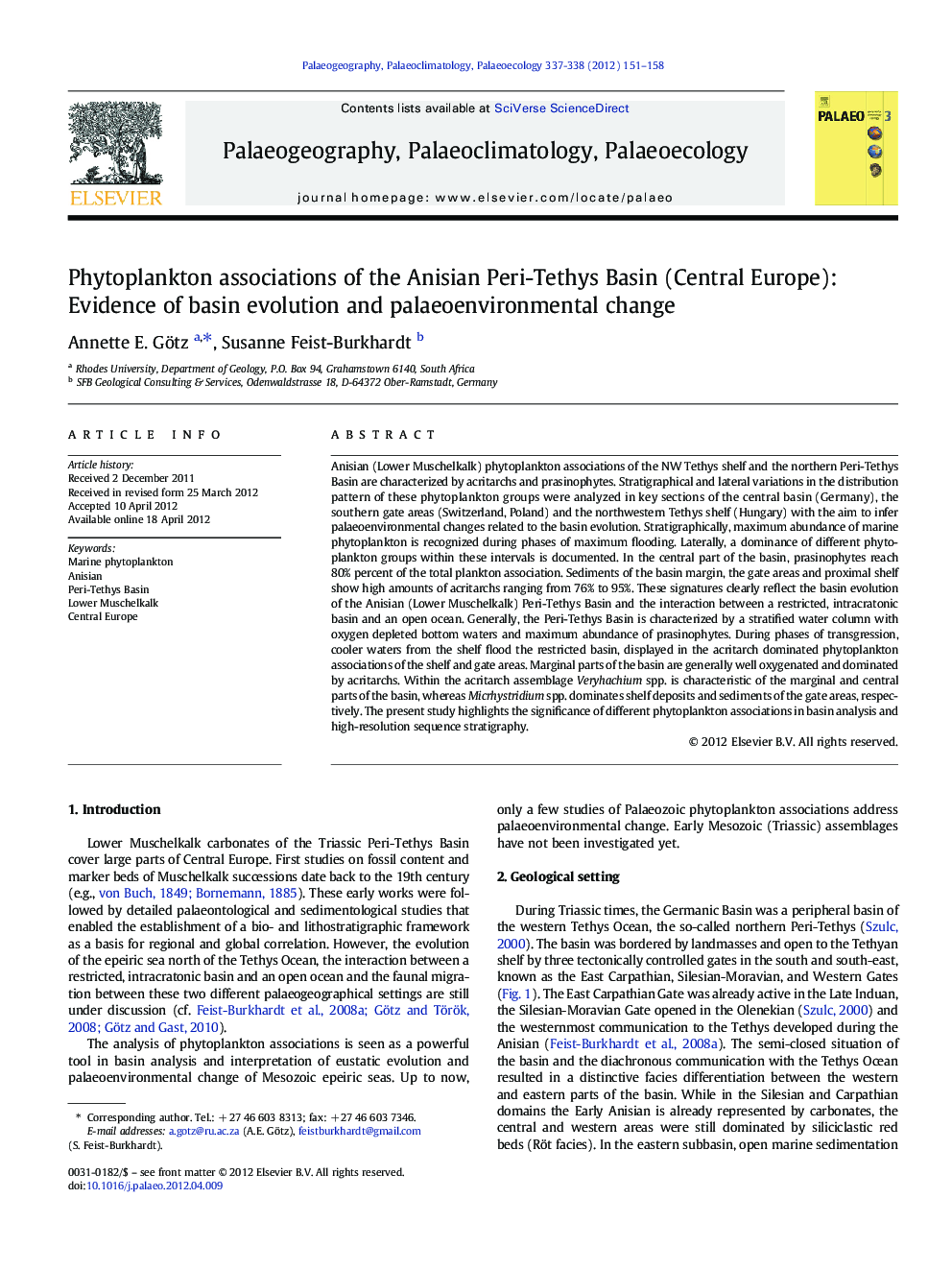| Article ID | Journal | Published Year | Pages | File Type |
|---|---|---|---|---|
| 4466917 | Palaeogeography, Palaeoclimatology, Palaeoecology | 2012 | 8 Pages |
Anisian (Lower Muschelkalk) phytoplankton associations of the NW Tethys shelf and the northern Peri-Tethys Basin are characterized by acritarchs and prasinophytes. Stratigraphical and lateral variations in the distribution pattern of these phytoplankton groups were analyzed in key sections of the central basin (Germany), the southern gate areas (Switzerland, Poland) and the northwestern Tethys shelf (Hungary) with the aim to infer palaeoenvironmental changes related to the basin evolution. Stratigraphically, maximum abundance of marine phytoplankton is recognized during phases of maximum flooding. Laterally, a dominance of different phytoplankton groups within these intervals is documented. In the central part of the basin, prasinophytes reach 80% percent of the total plankton association. Sediments of the basin margin, the gate areas and proximal shelf show high amounts of acritarchs ranging from 76% to 95%. These signatures clearly reflect the basin evolution of the Anisian (Lower Muschelkalk) Peri-Tethys Basin and the interaction between a restricted, intracratonic basin and an open ocean. Generally, the Peri-Tethys Basin is characterized by a stratified water column with oxygen depleted bottom waters and maximum abundance of prasinophytes. During phases of transgression, cooler waters from the shelf flood the restricted basin, displayed in the acritarch dominated phytoplankton associations of the shelf and gate areas. Marginal parts of the basin are generally well oxygenated and dominated by acritarchs. Within the acritarch assemblage Veryhachium spp. is characteristic of the marginal and central parts of the basin, whereas Micrhystridium spp. dominates shelf deposits and sediments of the gate areas, respectively. The present study highlights the significance of different phytoplankton associations in basin analysis and high-resolution sequence stratigraphy.
►Mesozoic phytoplankton associations indicate palaeoenvironment. ►Palaeoecology of Middle Triassic acritarchs and prasinophytes. ►Palaeogeography of the Anisian Peri-Tethys Basin of Central Europe.
